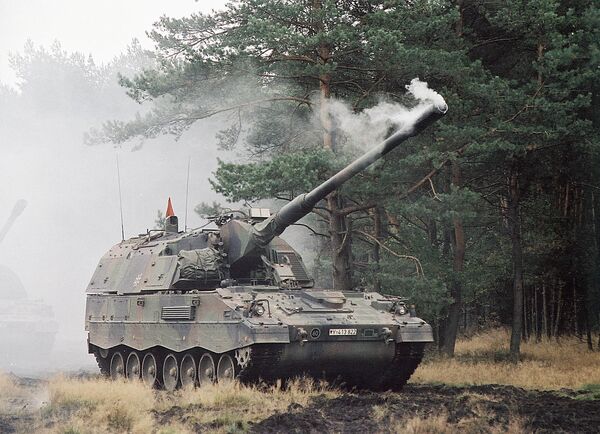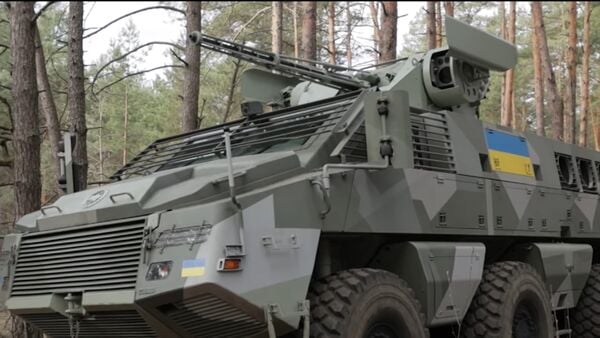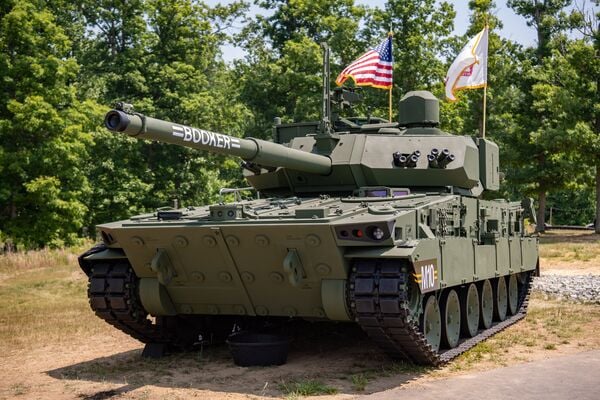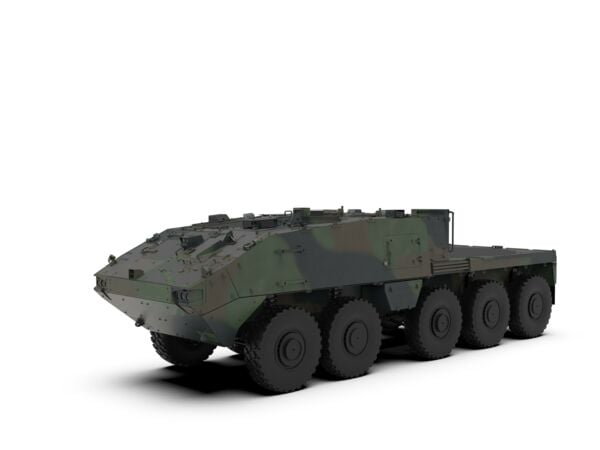- About
- Intara
- Capabilities
- Advisory
- Resources
- News
- Store
Ukraine conflict: PzH 2000s transferred to Kyiv
24 June 2022
by Nicholas Fiorenza


Ukraine has received PzH 2000 SPHs from Germany and the Netherlands. (KMW)
The Panzerhaubitze (PzH) 2000 155 mm self-propelled howitzer (SPH) is now part of Ukraine's artillery arsenal, Defence Minister Oleksii Reznikov tweeted on 21 June, thanking his German and Dutch counterparts Christine Lambrecht and Kajsa Ollongren.
German and Dutch instructors trained 60 Ukrainian artillery crew members on the SPH at the Bundeswehr's artillery school in Idar-Oberstein, Rhineland-Palatinate, southwestern Germany, starting from the second week of May following Lambrecht's announcement that Berlin would supply Kyiv with seven of the systems.
The SPHs came from the pool of systems being overhauled by Germany's Heeresinstandsetzungslogistik (Army Logistics Maintenance, HIL) organisation.
Ukraine received another five PzH 2000s from the Netherlands.
Other NATO countries are supplying Ukraine with M109 SPHs. UK Defence Secretary Ben Wallace told Sky News on the second day of the 15–16 June NATO defence ministers meeting in Brussels that London is providing more than 20 M109 155 mm SPHs purchased on the global market and refurbished.
Ukraine unveils Mbombe 6 with Spys ROWS
23 April 2024
by Vishal Sengupta & Sonny Butterworth


Mbombe 6 with Spys ROWS seen in Ukraine. (General Staff of the Armed Forces of Ukraine)
A video released by the General Staff of the Armed Forces of Ukraine on 18 April shows a South African Mbombe 6 6×6 armoured vehicle equipped with a Ukrainian remotely operated weapon system (ROWS).
The video shows the Commander-in-Chief of the Armed Forces of Ukraine, Colonel General Oleksandr Syrskyi, being presented with and inspecting several armoured vehicles, including the Mbombe, at an undisclosed location.
The Mbombe 6 is a wheeled armoured personnel carrier (APC) designed and manufactured in South Africa by Paramount Group, as well as under licence in India, Jordan, and Kazakhstan. The vehicle comes with an all-welded steel armour construction providing protection against small-arms fire up to NATO Standardization Agreement (STANAG) 4569 Level 4 standards.
The vehicle features a mine-resistant honeycomb flat-bottomed hull design, which lowers its overall height and provides protection against a 10 kg anti-tank mine detonated underneath the hull or a wheel station.
Operational testing for M10 Booker planned for July
22 April 2024
by Meredith Roaten


M10 Booker Combat Vehicle (pictured) will be put through its paces at Fort Liberty in boreal summer 2024. (US Army photo by Bernardo Fuller)
One company in the 82nd Airborne Division will be the first unit to perform operational testing on the new M10 Booker combat vehicle in boreal summer 2024 and will then become the first unit equipped if the testing is successful, army leaders announced on 18 April.
Testing at Fort Liberty, North Carolina, will focus on making sure the platform is baseline operational, Major General Glenn Dean, programme executive officer for Ground Combat Systems, told reporters on the sidelines of an army live-fire and commemoration event. Training for soldiers will focus on logistics and new maintenance after the unit receives the vehicles in July, Captain Rachel Ledbetter, company commander of the M10 Booker test detachment, 82nd Airborne Division, told Janes on 18 April.
While the Abrams M1A2 main battle tank (MBT) and M10 Booker share many commonalities, such as the Commander's Independent Thermal Viewer (CITV) and machine guns, the logistics tail is different. This means that the test detachment, which come from armoured backgrounds, will have to practice, Capt Ledbetter said.
Update: GDELS presents 10×10 Piranha Heavy Mission Carrier
19 April 2024
by Nicholas Fiorenza


Flatbed version of 10×10 Piranha HMC designed for example to carry large weapon system modules. (GDELS)
General Dynamics European Land Systems (GDELS) presented its 10×10 Piranha Heavy Mission Carrier (HMC) in a press release on 15 April.
The new Piranha version has a gross vehicle weight (GVW) of up to 40 tonnes and can carry a 17 tonne payload. It features a 10×10 all-wheel-drive-power-driveline and a multi-link suspension system with 1st/2nd and 4th/5th axle steering, which according to GDELS enables minimum axle loads to comply with European road regulations, cross-country mobility, and trench crossing capabilities with a reduced turning radius of less than 18 m.
The Panzerhaubitze (PzH) 2000 155 mm self-propelled howitzer (SPH) is now part of Ukraine's artiller...
Latest Podcasts
Iran Israel analysis
In this podcast Janes analysts discuss the Iranian attacks on Israel on the 14 April. They highlight the military systems used by Iran and the performance and impact of these on Israel. They also discuss the implications of this attack goi...
Listen nowJanes Case Studies
Using Janes Intara to build a common intelligence picture: Russian build up on the Ukrainian border
View Case StudyNews Categories
 Weapons Details
Weapons Details